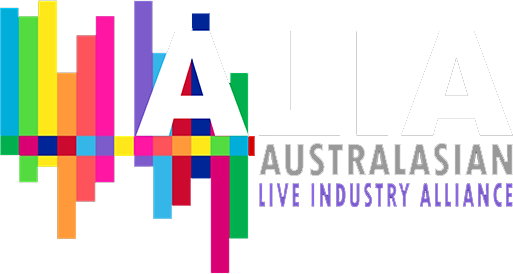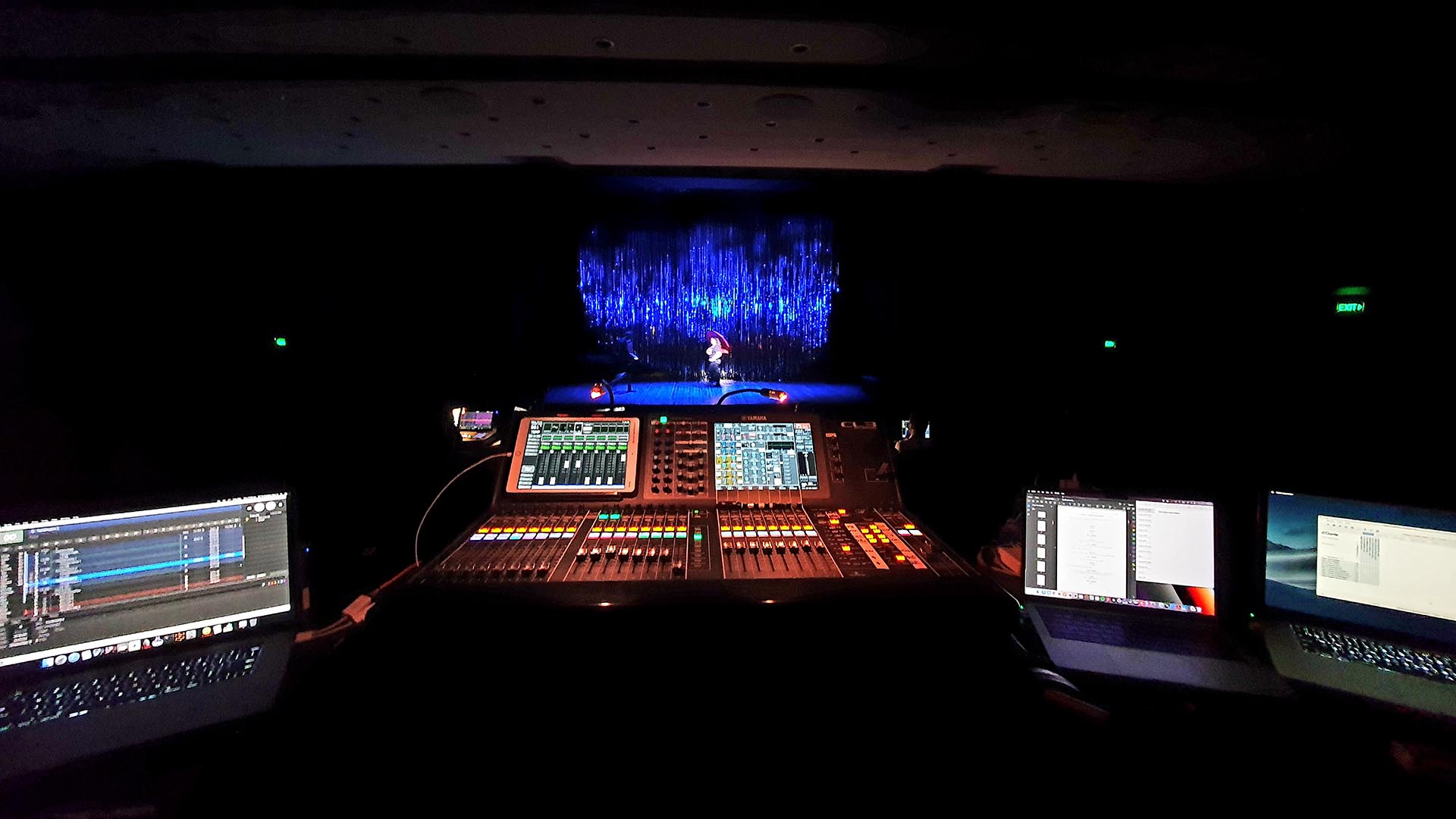Queensland Performing Arts Centre (QPAC) and Queensland Theatre are currently staging The Sunshine Club, a revival of the “unashamedly feel-good musical” (The Australian), first performed by Queensland Theatre in QPAC’s Playhouse in 1999.
The hit Australian musical follows Frank Doyle, an Aboriginal serviceman who spent years fighting shoulder-to-shoulder with troops from all over Australia only to find race relations hadn’t changed at all when he returned home to Brisbane after World War II.
Brimming with hope and defiance Frank sets up his own ballroom, The Sunshine Club, where everyone is invited to meet, mingle and sway the night away.

Sound designer Derek Wilson was asked to use as much of the FOH rig at QPAC and as much of the Queensland Theatre equipment as possible.
“With shows cancelling due to Covid and budgets being tight, it makes complete sense to use what’s available and see if we can make it work for our show, rather than reinvent the wheel,” commented Derek. “We managed to keep most of it within the two houses, with some hires from Norwest rounding out the equipment package.”
The artistic brief was more up to Derek, but there is a definite direction to not try and flesh out each scene with SFX and ambience, to let the focus remain on the story via dialogue, and the music and lyrics. Musically the aim is to get as close to a late 40s jazz dance club as possible, while also maintaining a musical theatre sensibility.

“To me, these briefs complimented each other, meaning we can use a traditional L/R system with centre cluster and fills, and not worry about surround systems or specific FX boxes,” added Derek. “My focus is to bring all the attention forward to the narrative on stage, and keep the sound pretty transparent and natural.”
The Playhouse PA is an L-Acoustics rig which was deemed to be of good coverage and level for the room, and appropriate for the show. It consists of:
Left/Right: 3 x ARC wide, per side
Centre Cluster: 2 x ARC wide, 2 x ARC focus
Subs: 4 x SB18m
Delay Ring: 4 x 108P
Front Fill: 6 x 5XT – which we set on the deck of our extended thrust
On stage, they have two X12s on a mid-stage LX bar and two X12s on an upstage LX bar overhead.
There are two Meyer UPM-1P on LX booms behind the proscenium, two more on LX booms mid-stage and two more floor-mounted on the band truck.
There are a couple of QSC K12s on sticks far upstage for when the band truck is all the way out.
A mix of Yamaha MS202, MS101 and Genelec monitors are used for vocal booths and tech monitors.

For mixing, Derek uses Queensland Theatre’s Yamaha CL3 allowing for the show to be programmed at QT during the rehearsal period and set up all the networked I/O, program the Dante patch and have the whole system apart from the QPAC elements all running before the bump in. The Playhouse console is a CL5 which was available as a backup so that all worked out well.
QLab via DVS is run for all extra SFX, BGM and announcements. Backstage there is a Yamaha 01V with a Dante card used for monitoring the RX.
“The band are on a rolling band truck, which starts far upstage and comes a long way downstage with three different positions, so we had to consider both the equipment ramifications and the audible ramifications of that,” added Derek. “There is also a specific bird call that is integral to the show. From watching archives of the original production and researching, I found the type of bird used then and managed to find an Australian nature recordist who had some very good recordings of that bird. But then there was a moment that called for some more bird calls. The show references the part of Brisbane I live in, several times, and I was able to incorporate some bird calls that my partner and I have recorded from our balcony. I was quite pleased that we used birds recorded in an actual location from the show.”
Derek remarks that The Playhouse at QPAC is a pretty great sounding room and their house PA is well executed as mentioned previously. But due to the necessary placement of the L/R ARCs, combined with their thrust stage, they did end up with actors out in front of a low-hanging PA wearing Omni hairline mics. As a result, they had to pay a lot of attention to scene programming, EQ and specific moments to keep this under control.

Microphones included 16 x DPA 4061 hairline mics with Shure UR4D wireless systems for all actors. RX and stage tech Brady Watkins is amazing at colour matching the mics to each performer and maintaining the mics throughout the show. It’s a big musical with a lot of dancing, quick changes, hats, wigs, the works so having a great radio mic tech is essential, and Brady certainly is one.
On the band truck:
Kick: Shure Beta52
Snare top: Shure Beta56
Snare bottom: Sennheiser e904
Hats: Rode NT5
Rack & Floor Toms: 2 x Sennheiser e904
Underheads: 2 x Rode NT5
Double Bass: artist’s own pick up through a Radial J48
Upright Piano: 2 x DPA 4099 & 1 x Shure Beta57
Accordion (right-hand keys): Rode NT5
Tuba: Sennheiser MD 421
Bass Clarinet: Sennheiser MD 421
Sax: Shure Beta58
Trumpet: Shure Beta58
Didgeridoo: Audio-Technica ATM87R
Bandstand vocal mic: 2 x Shure 55SH
Offstage vocal booths: 2 x AKG 414
In keeping with a 40s jazz band sound, they mic the kick outside the head and kept it pretty restrained in the subs. Overheads are underhung to keep them out of the visual picture.
“For the piano, we have the DPA 4099s on the magnetic piano mounts inside the upright with the lid down,” explained Derek. “I added the Beta57 aimed at the centre rear of the piano to use for more controllable volume in the monitors, but also to give it a bit of edge compared to the prettiness of the 4099s.

“I found the ATM87R buried deep in Queensland Theatre’s vaults and after reading up on it and hearing it, figured it would be good on the didgeridoo. The playing position was quite out in the open, near a lot of traffic, so having a discrete boundary mic there on the floor that the player could aim for worked well.
“We also actually use the Shure 55SH mics. It’s common to have them as prop mics and just use the head mic on the actor, which we do when there is dialogue, but there are also three big songs with a singer right there so we figured it would be nice and authentic to use them. It worked well.”
One of the biggest anticipated challenges for Derek is having the live band onstage amongst the actors with their Omni head mics.
“We talked a lot about the volume of the band and balancing the needs for sound with the needs of the musicians and their energy when playing,” said Derek. “It ended up not being a huge deal, as we all worked on it as a company and were able to reach happy compromises that worked for everyone. It was a joy to be part of a show where everyone worked and problem-solved to make everyone’s job easier and make it the best show it could be.”
Derek remarks that Sunshine Club is a show he is proud of adding that FOH operator Warren Hook is also doing an incredible job.
“He trusted my vision and decision-making process, and I in turn trusted his skills and decisions. Along with massive support from the Queensland Theatre team, the QPAC team and all the departments of The Sunshine Club it has truly been an enjoyable experience bringing this show to the stage.
“The Sunshine Club has so much to say about where we are at as a nation, and what the future could hold. It’s an honour to be a part of this unique Australian musical and its vital storytelling.”
Photos: Warren Hook, Derek Wilson, Brett Boardman




















































